
Welcome to The Regenerators.
Created in partnership with The European Marine Energy Centre.
Introduction
Renewable energyA natural source of energy that will never run out, such as from wind, the sun, or water. is energy generated from natural resources that are not reduced when we use them, for example the Sun, wind and tides.
Unlike, non-renewableA resource that cannot be replaced when it is used up, such as oil, natural gas or coal. resources, such as coal, oil and natural gas, renewable energy does not contribute to Global warmingThe increase in Earth’s average temperature, mostly caused by the build-up of greenhouse gases in the atmosphere. because it doesn't produce Greenhouse gasesGases such as water vapour, carbon dioxide and methane, in Earth’s atmosphere that trap heat..
We can make use of many different types of renewable energy sources to provide electricity to heat our homes and move our transport.
Types of renewable energy
Examples of renewable energy sources are sunlight, the wind and waves.
Sunlight is transformed into electrical energy using solar panels. The energy from wind is transformed into electricity using turbines.
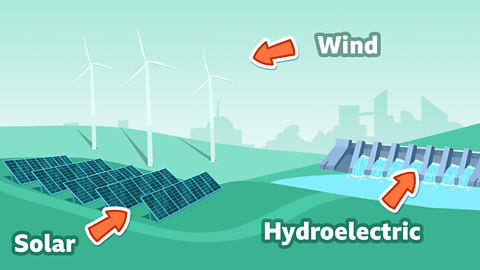
Marine renewable energy is a type of kinetic energyKinetic energy is the energy of something when it is in motion. and is generated by the movement of water in the oceans. It is always available, every day of the year.
Tidal energy

Tidal streamsThe horizontal flow of water through the oceans caused by the continuous ebb and flow of the tide. Tides move based on the gravitational pull of the Moon and the Sun. are created by the gravitational pull of the Moon and Sun on the world’s oceans.
Due to the predictability of the Moon and Sun’s positions, we already know today the exact amount of tidal energy we will have over the next two decades!
Tidal stream devices use the energy from the currents that flow with the tides. In a similar way to the wind turning wind turbines, tidal currents turn tidal energy turbines.

Tidal stream devices
The European Marine Energy Centre (EMEC) tests tidal technologies on the Orkney Islands, off the north coast of Scotland.
- Image source, Orbital Marine Power
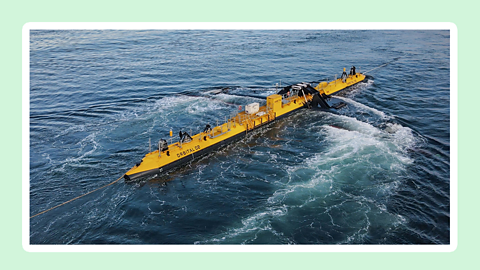
Image caption, A tidal stream device at EMEC’s Fall of Warness tidal test site off the Orkney Islands
- Image source, Orbital Marine Power
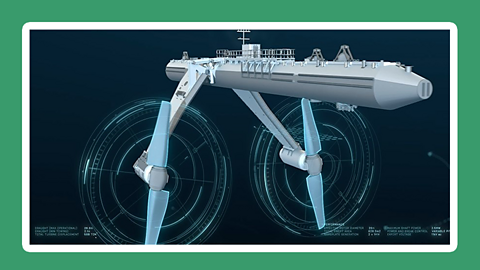
Image caption, The turbines rest under the water allowing the current to turn the blades
1 of 2
Watch the video below to see some other design concepts and how they could harness tidal energy at the Fall of Warness test site.
Wave energy
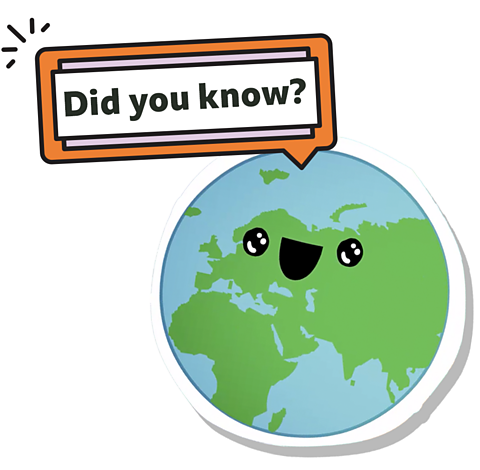
Waves are formed by wind blowing over the surface of the sea. The movement of water carries energy which can be captured by the wave energy technology and turned into electricity.
The electricity travels through underwater cables and is fed into a large network of cables called the national grid. It eventually ends up in our homes where we can use it to cook, keep warm and use electrical devices.
Waves are everywhere around the globe in oceans, seas and lakes. The best waves to create electricity occur in areas where strong winds have travelled over long distances.

Wave energy devices
The test site off the coast of Orkney is a very special place because it has recorded some of the biggest waves in Europe. Energy from the waves can be captured in many ways, which is why the devices are different shapes and sizes.
- Image source, Colin Keldie

Image caption, The Billia Croo test site off the west coast of the Orkney mainland has been identified as an area for high potential wave energy
- Image source, Rob Ionides

Image caption, Waves are 2 to 3 metres high on average, but have been known to reach 17 metres high.
- Image source, Pelamis

Image caption, This wave energy converter sits on top of the water and moves with the motion of the waves.
- Image source, Colin Keldie
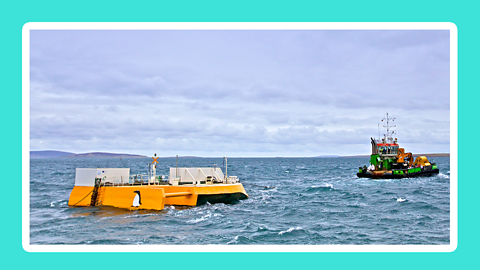
Image caption, This device also converts the kinetic energy of the waves as it rests on top of the water.
- Image source, Colin Keldie
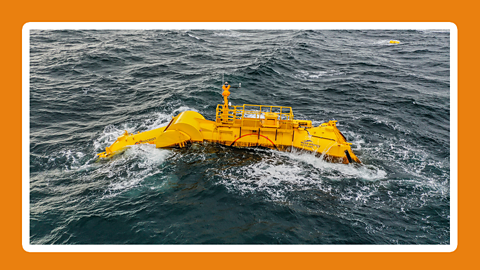
Image caption, Another wave energy device in Scapa Flow, a body of water off the mainland of Orkney.
1 of 5
Watch the video below and see the different wave energy concepts which could be tested at the Billia Croo testing site.
It is estimated that tidal stream and wave energy combined could cover around 20% of the UK’s current electricity needs.
In a time when we need to stop burning Fossil fuelsNatural fuels such as coal, oil, or gas formed from the remains of plants, animals and other organisms that died millions of years ago. to reduce the impacts of climate change, protecting our planet and our lives, renewable energy like marine energy is important and exciting.
Lesson complete!
Well done Regenerator, you've completed this lesson. Now let's see what you can remember.
There's more to learn
Explore more lessons and content from around the BBC.
Why are our oceans important?
GREEN CLASSROOM
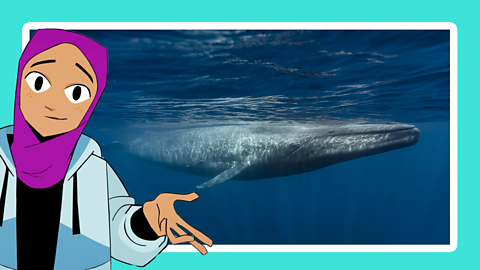
How does climate change affect living things?
GREEN CLASSROOM

Year 3 - 6 and P4 - P7
GREEN CLASSROOM

More from The Regenerators
BBC BITESIZE
